| Blade Size | 13" Hand Forged High Carbon Steel, 5160. Unpolished Blade. |
|---|---|
| Handle Size | 5.5" Tail Tang Water Buffalo Horn Handle. |
| Belly | 2.3" |
| Blade Material | High Graded Carbon Steel, 5160 |
| Blade Thickness | 10 mm |
| Blade Finish Type | Jungle Finish Blade |
| Blade Weight | 950 gm |
| Handle Material | Water Buffalo Horn Handle. |
| Handle Type | Fixed Blade |
| Chakmak Included ? | Yes |
| Hand Orientation | Right Handed |
| Sheath Material | Cottonwood, Refined Leather |
| Blade Steel Hardness | Spine = 22-25 RC, Belly = 45-46 RC, Edge = 54-55 RC |
| Recommended Uses For Product | Daily needed work, Farming, Hunting, Bushcrafting, Training, Fishing, Camping, Hiking, Gift, Collection and Decoration. |
| Special Feature | Camouflage Kukri |
13″ Chainpure Jungle Camouflage Kukri
Original price was: US$ 185.00.US$ 145.00Current price is: US$ 145.00.
This is the latest product of Ex Gurkha Khukuri House(EGKH). this is 13″ 3 Chiras(Fuller) Farmer Bushcrafting Kukri are two different words that take two different meanings. Panawala is a popular village from the eastern side of Nepal. These various designs come from the same village.
About this item
- EGKH Nepal company is owned and run by Ex Veterans who supply hand-forged high-quality kukris blades all around the world
- Handcrafted in the EGKH factory outlet in Nepal by famous & very skilled blacksmiths using very high-quality materials in a very traditional manner.
- 100% Quality Warranty, each blade comes with EGKH marked on the blade and our quality warranty certificate.
- Hand Forged High Graded carbon steel blade, 5160
- Razor Sharp blade, Easy to sharp, Balance water tempered for daily work
This is a 13-inch chainpure camoflash Kukri. This Chainpure Camouflaged Khukuri (kukri) is the unpolished khukuri used also by Gurkha soldiers for tactical jungle warfare. When the Gurkha soldier joins the British Army they get Jungle Khukuri on enlistment and later on, most of the soldiers camouflage their khukuri (kukri)when they are stationed in war-hit countries. The blade comes with two pockets on the back of the scabbard which hold a blunt steel called “chakmak” for sharpening the blade or for striking spark from flint and a little knife known as “karda” used for skinning, cutting paper, and opening later. The notch (kaura or kaudi) in the blade near the hilt of most khukuris serves as a conduit for the blood on the blade to drip out, thus preventing it from soiling the hilt, as well as a device for catching and neutralizing an enemy blade. The handle is more practical and more beautiful.
Only logged in customers who have purchased this product may leave a review.

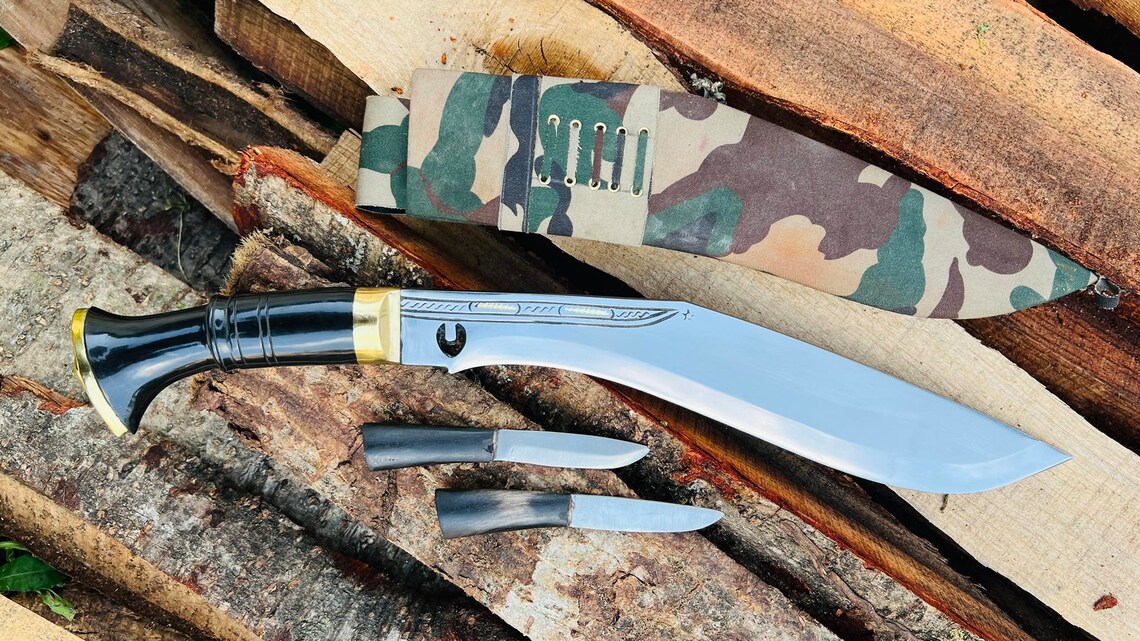
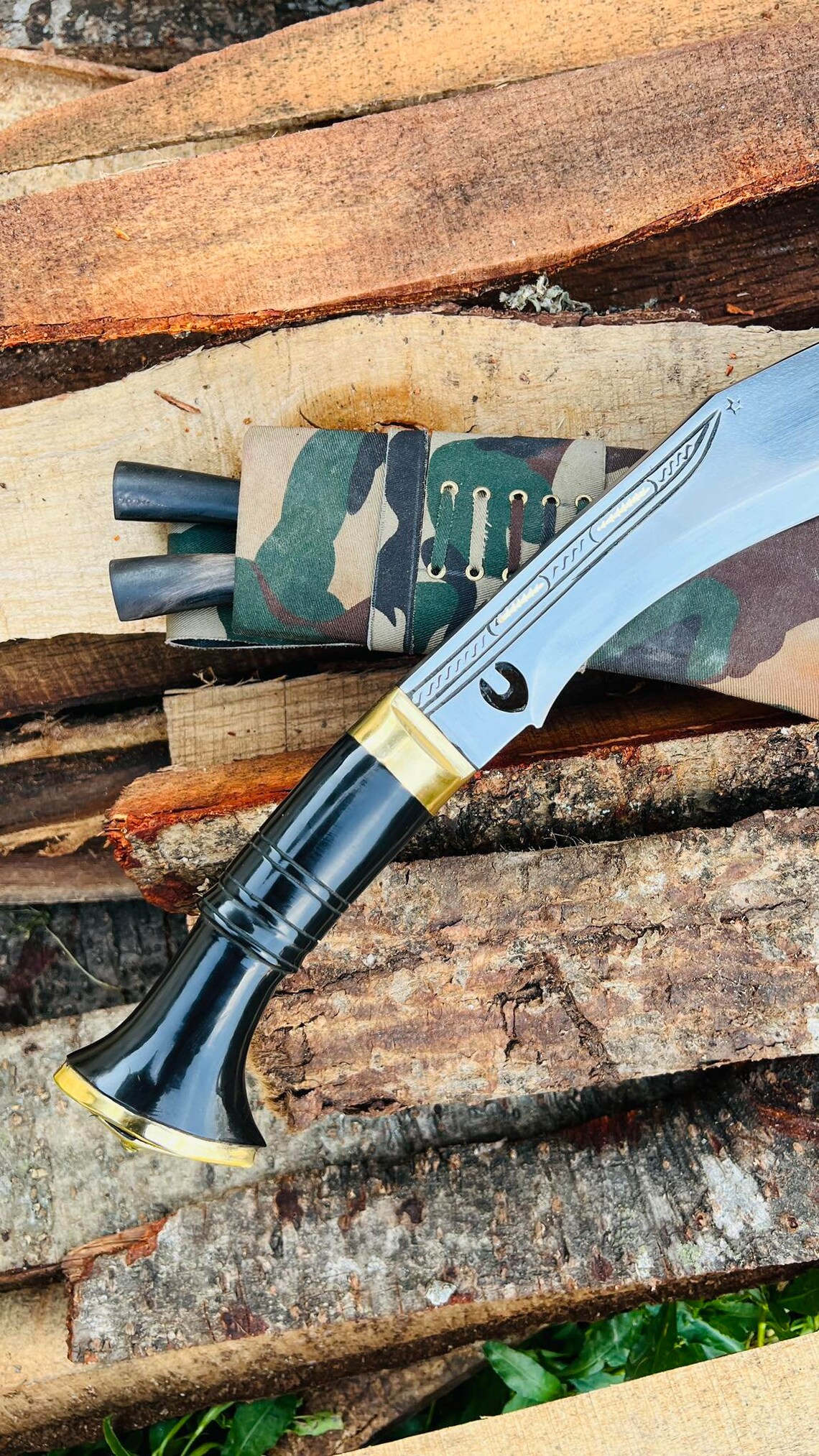
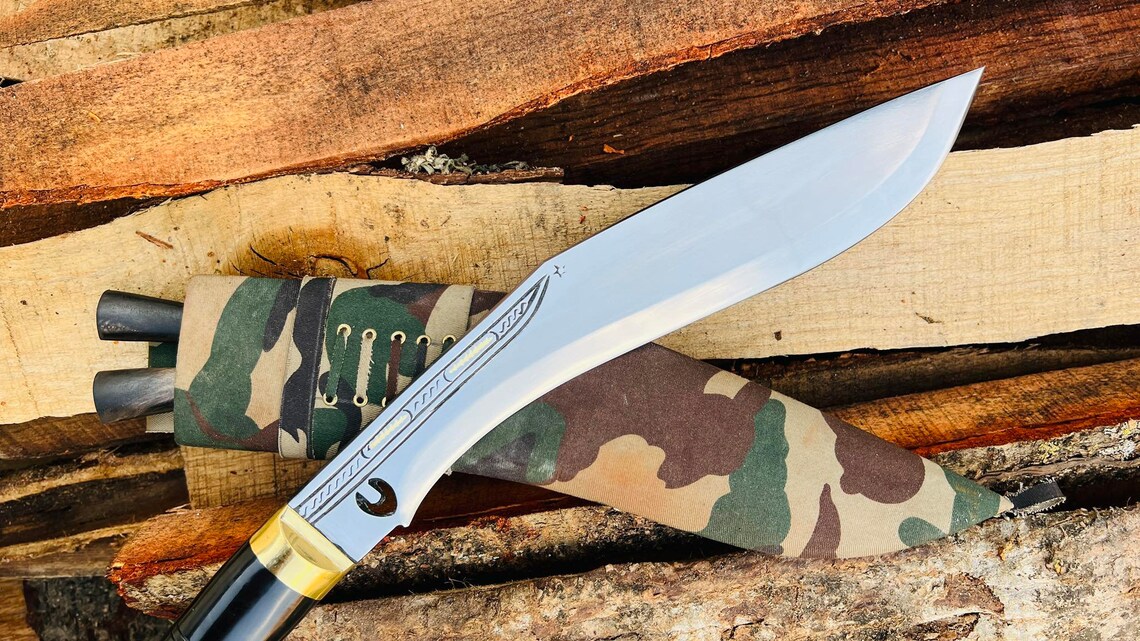
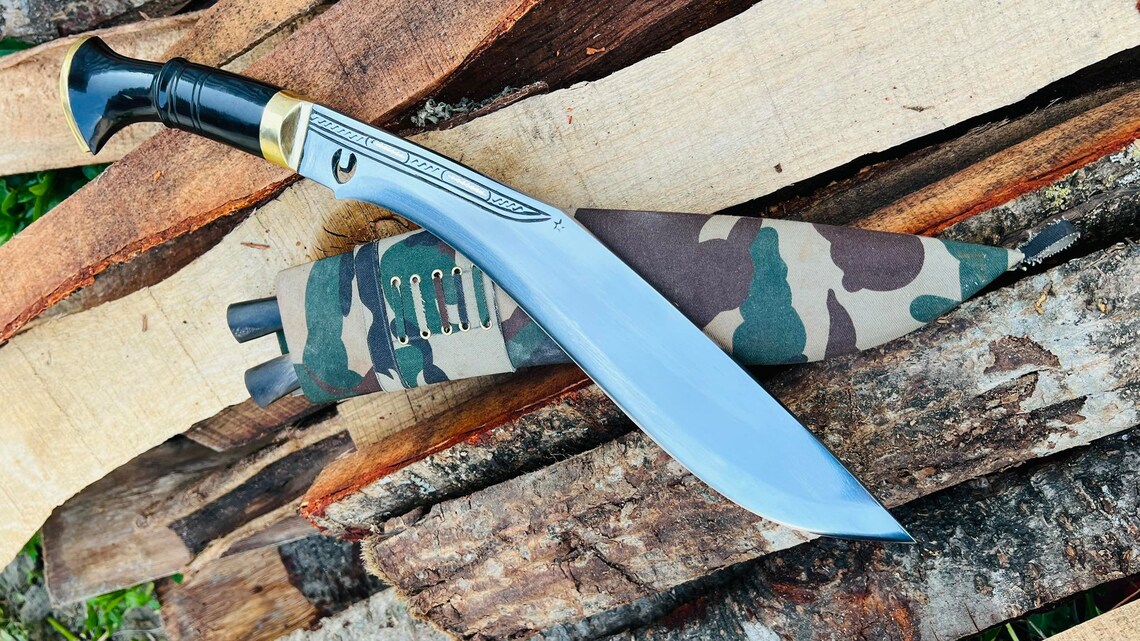
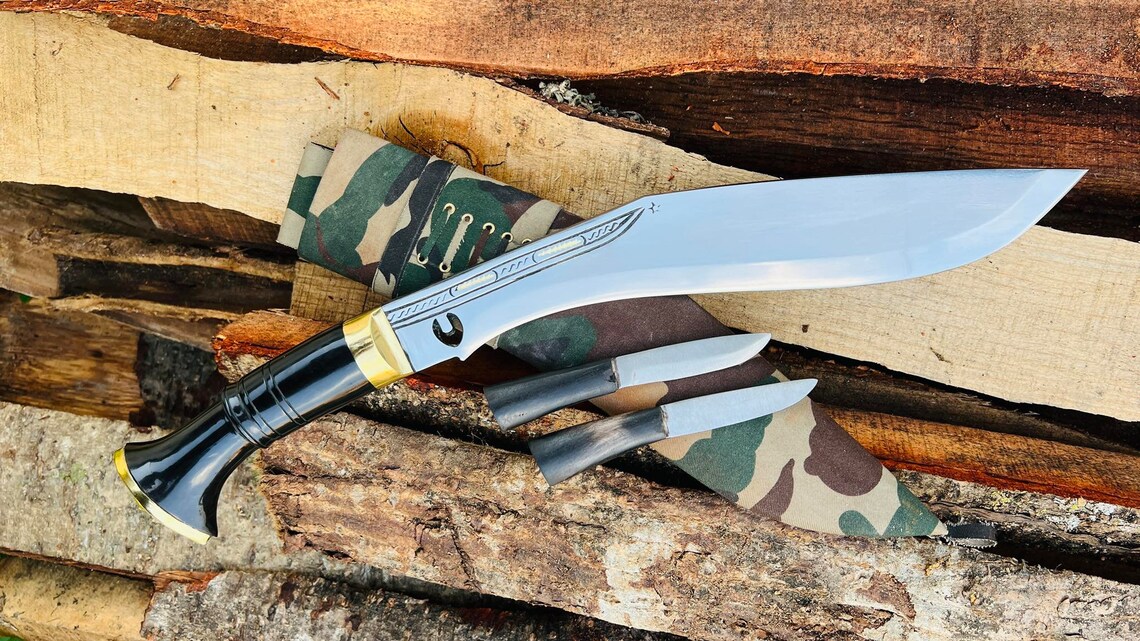
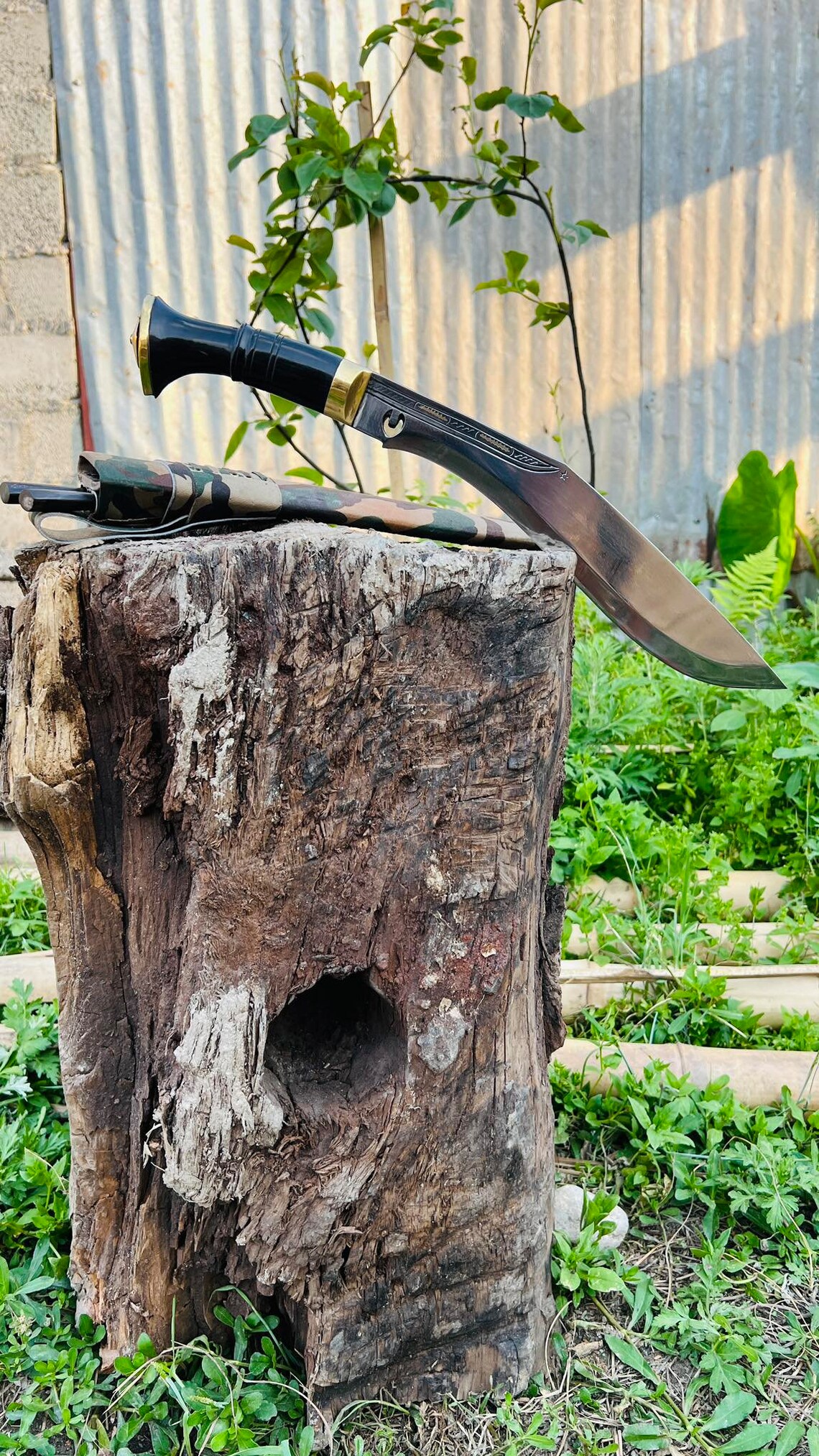
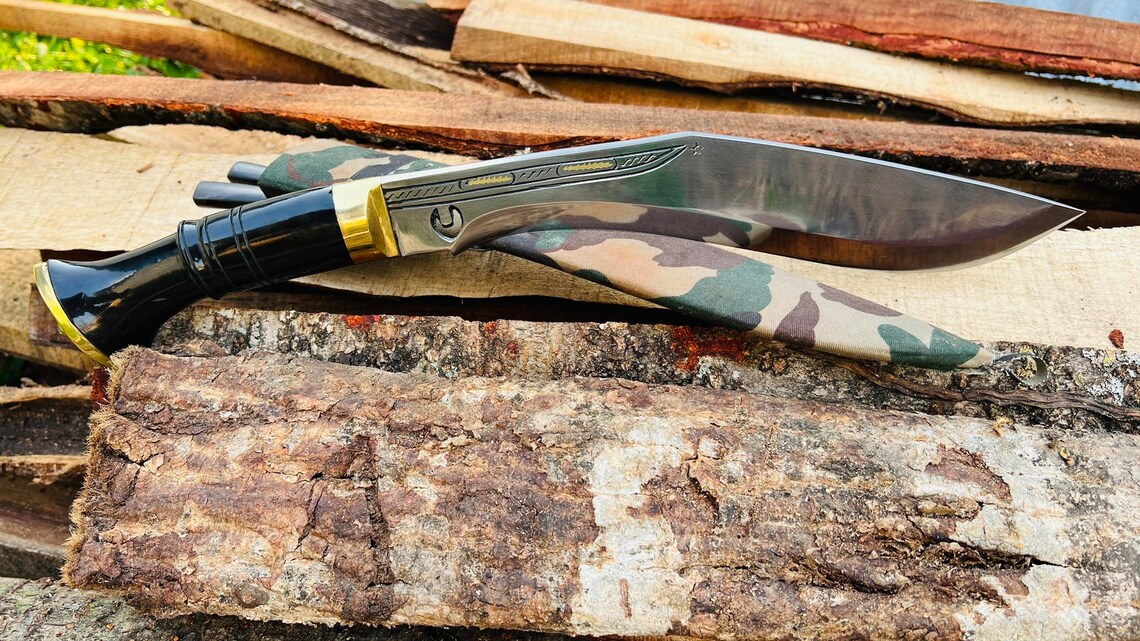
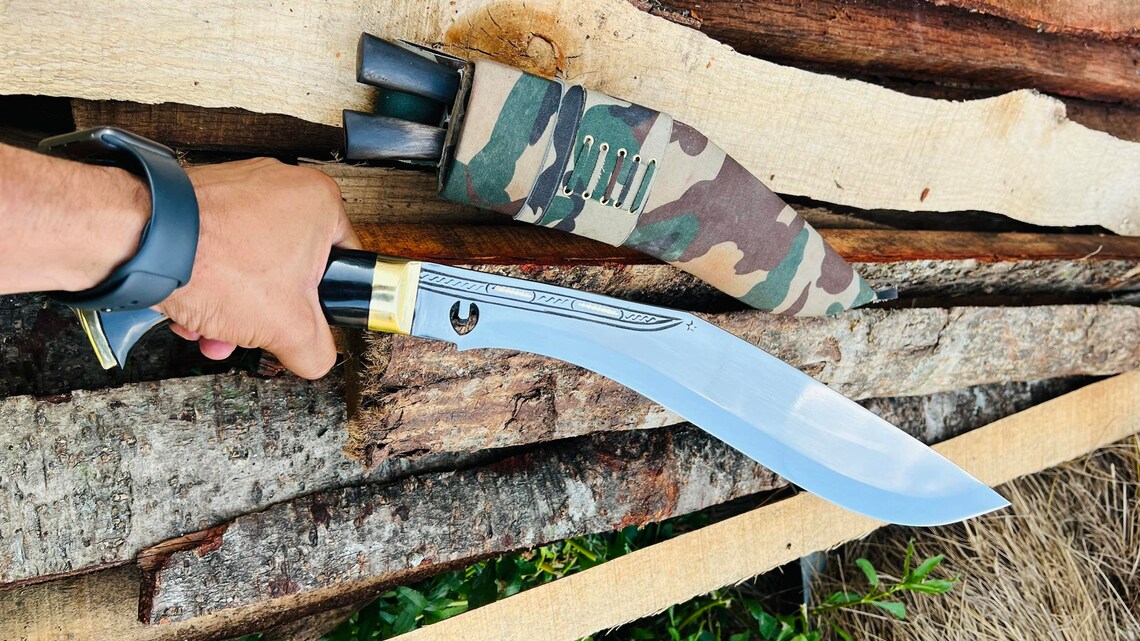
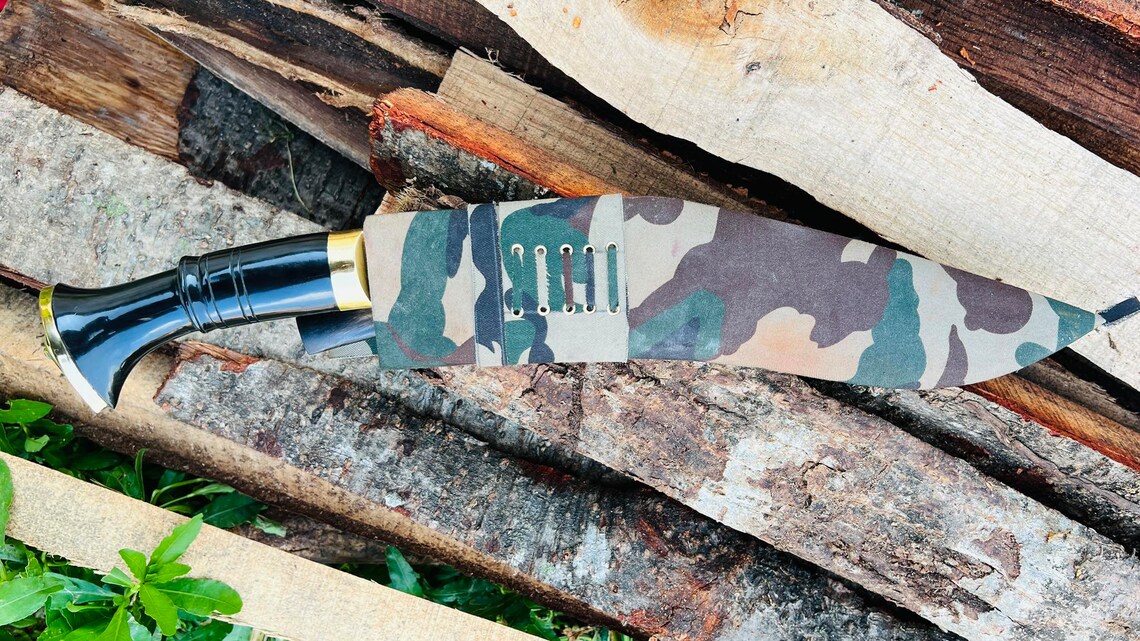
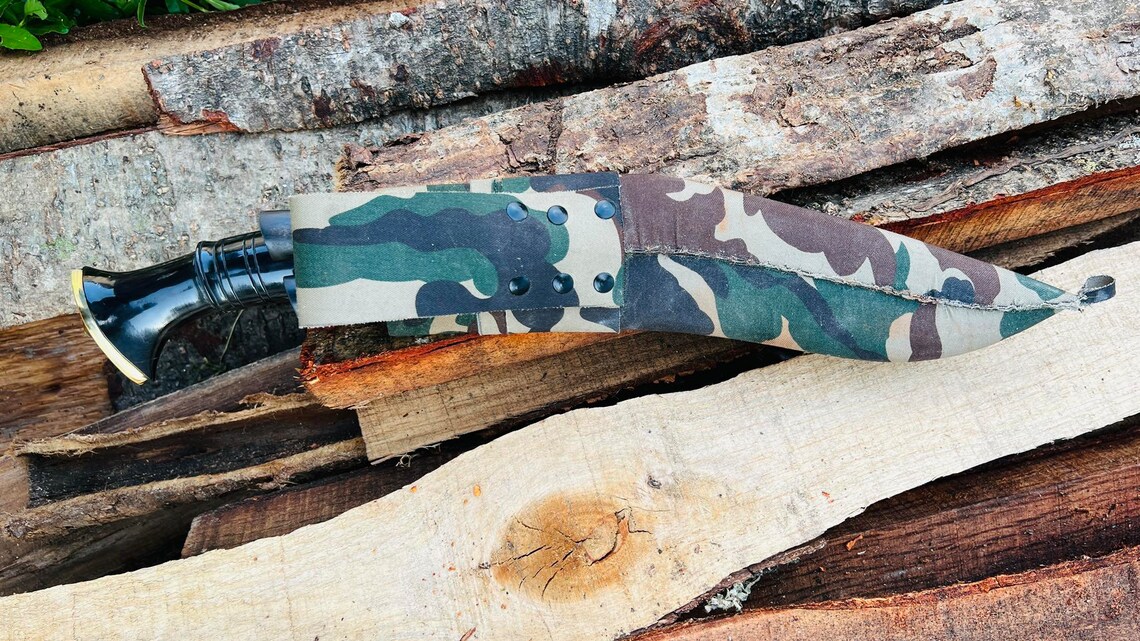
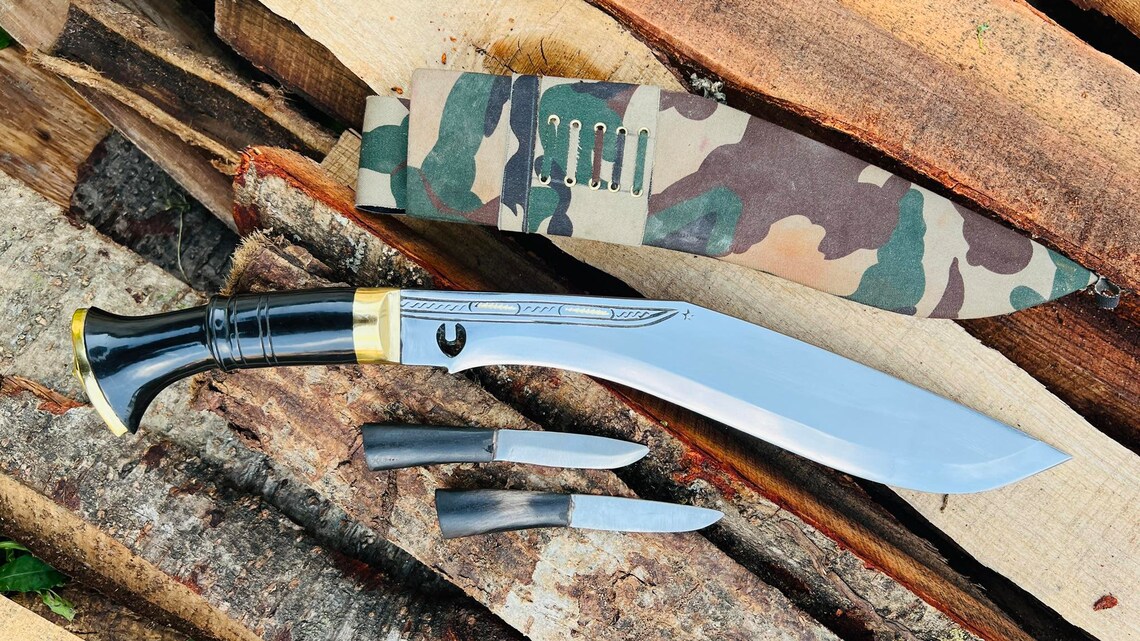
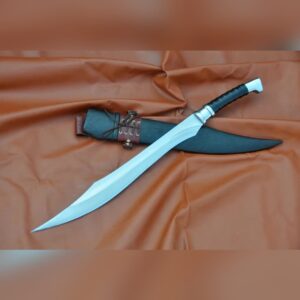
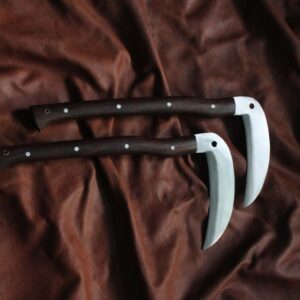
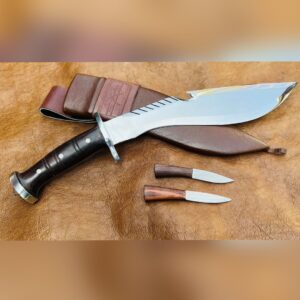
Reviews
There are no reviews yet.